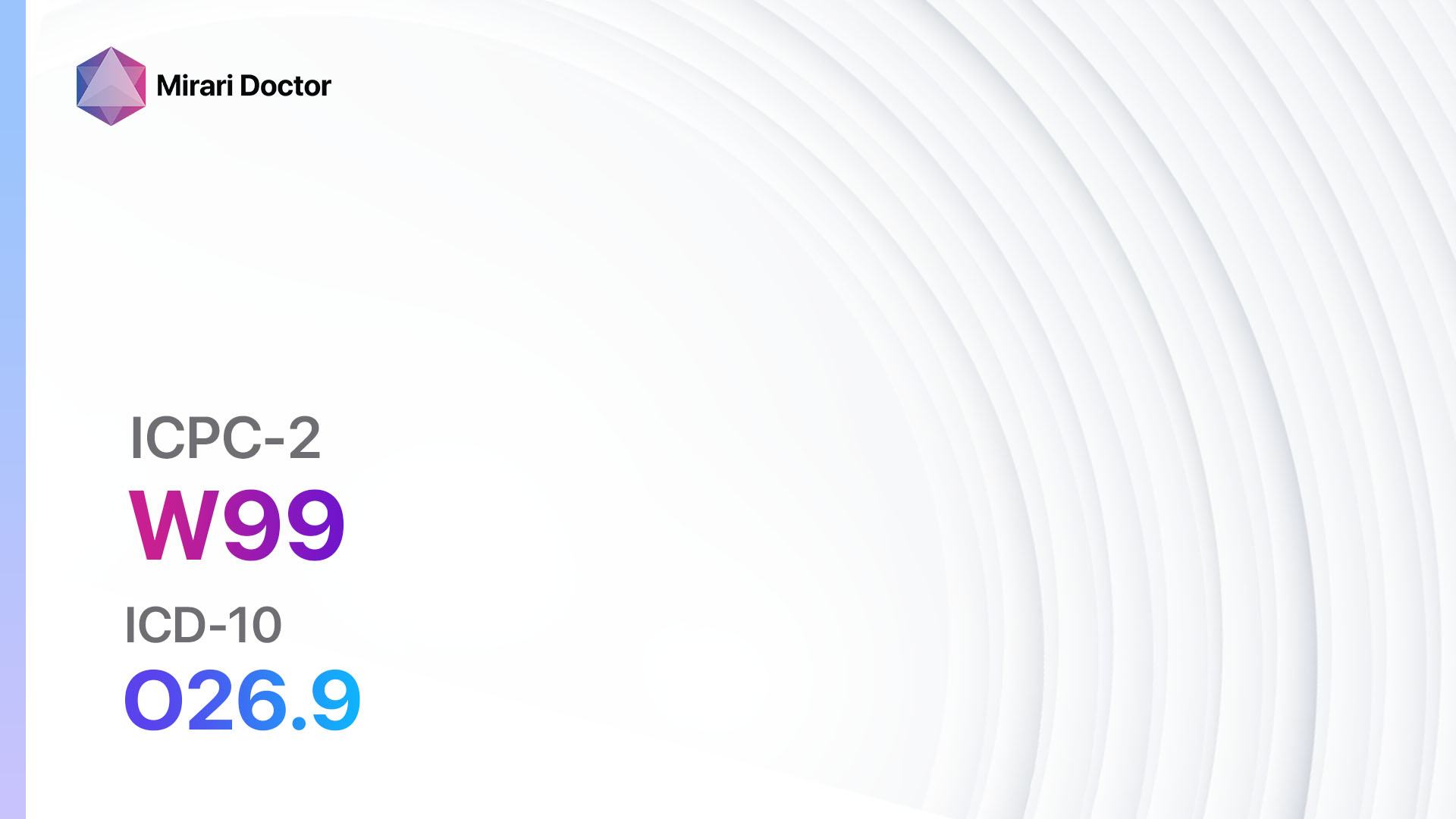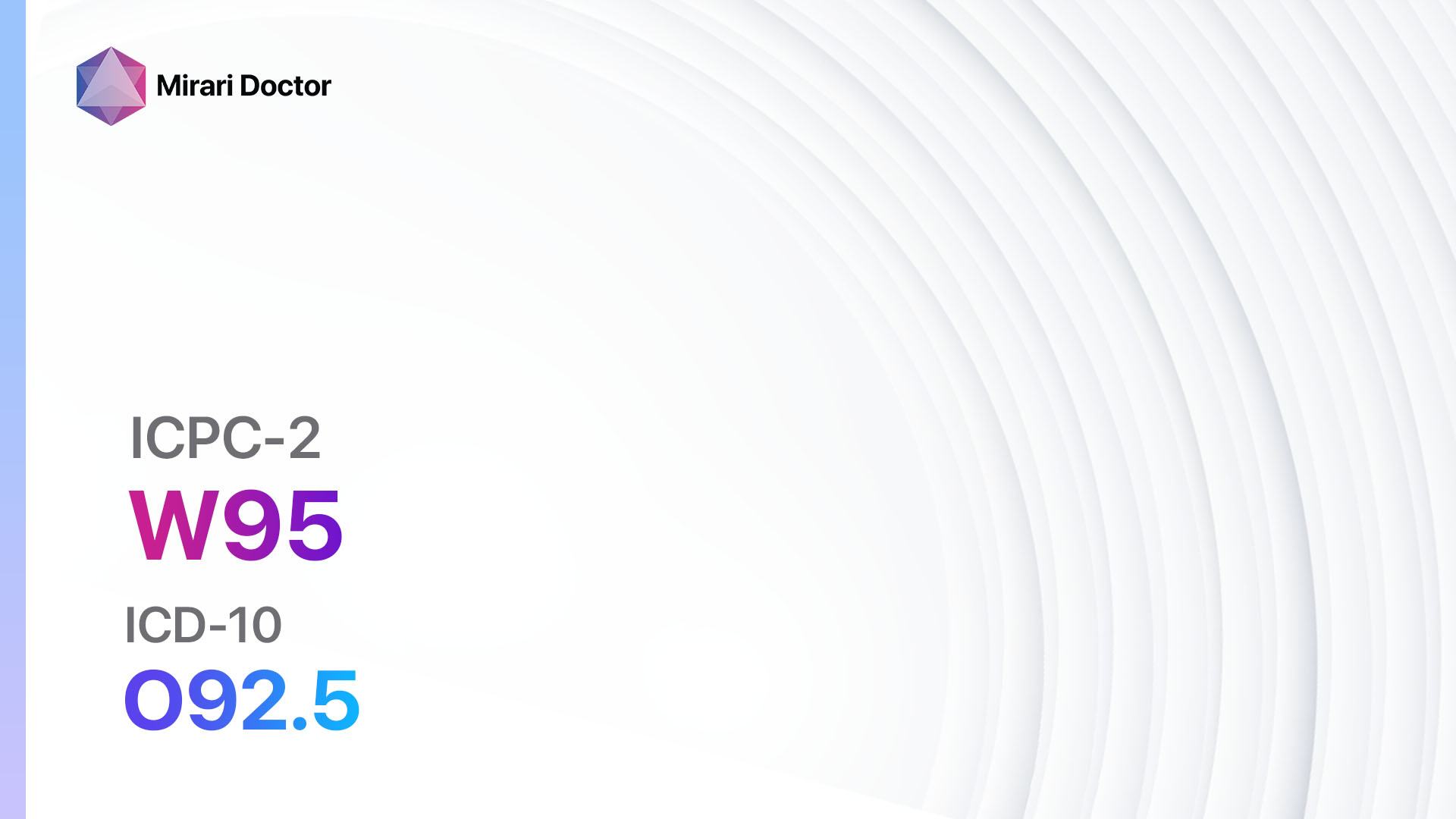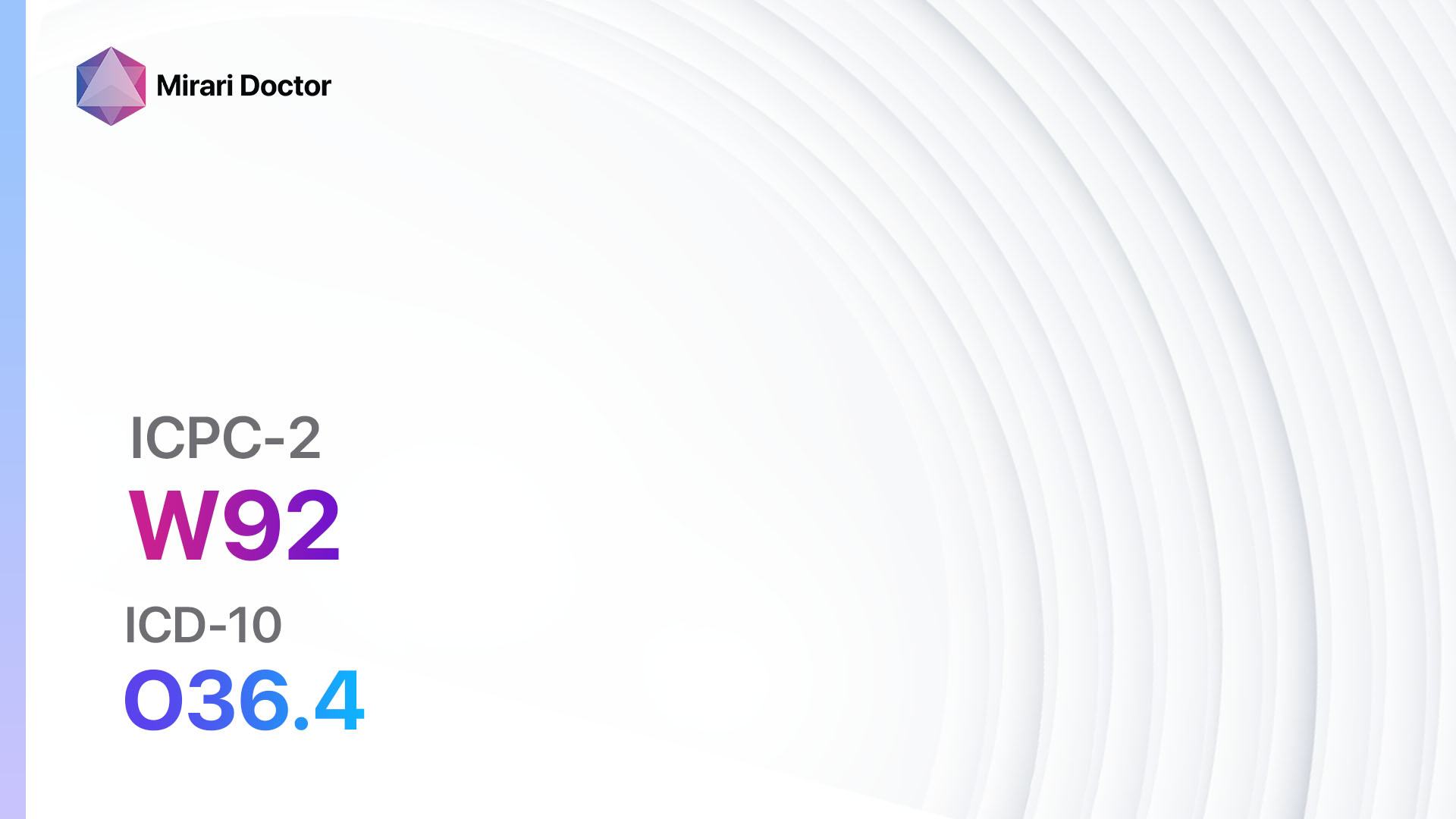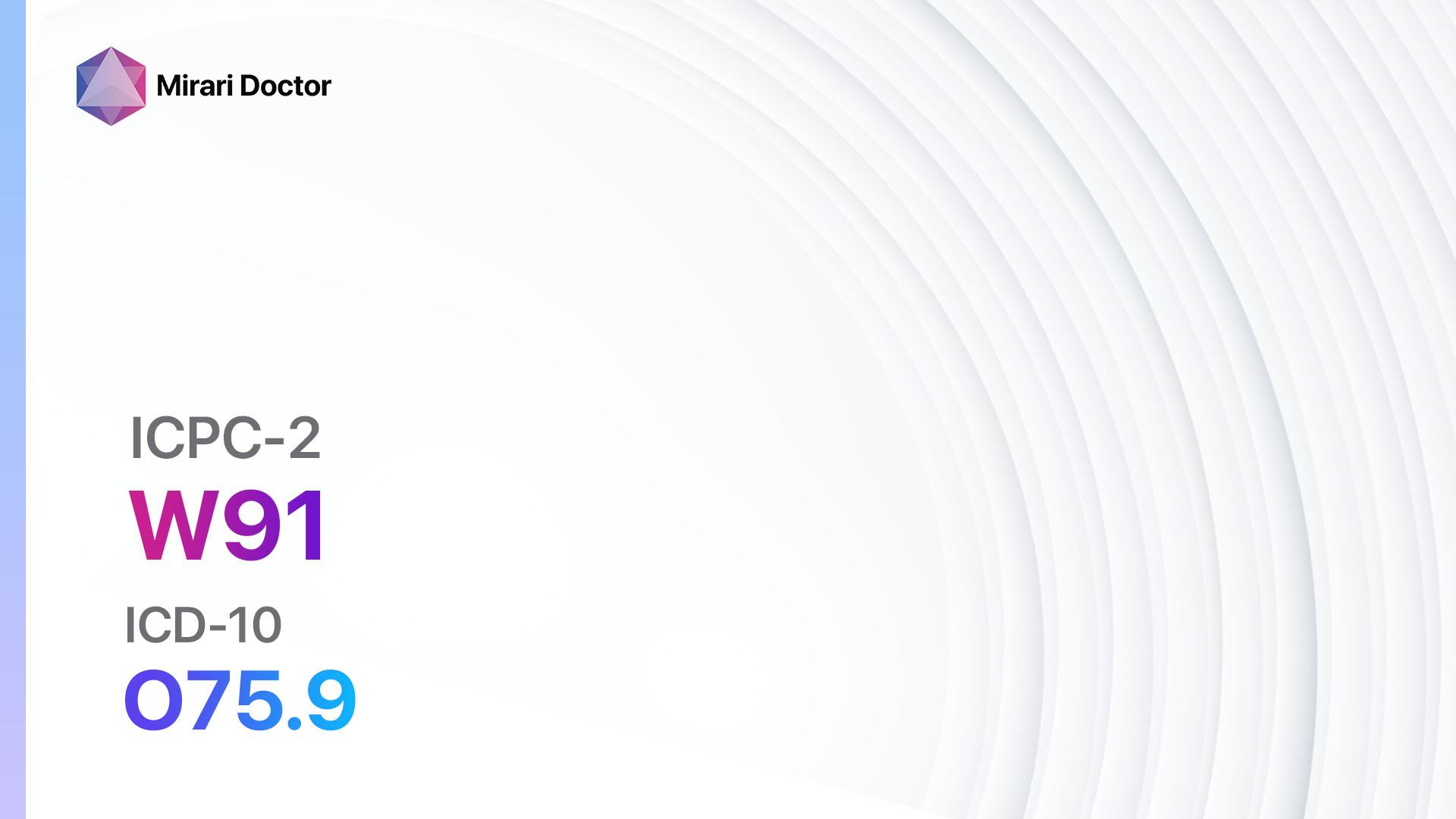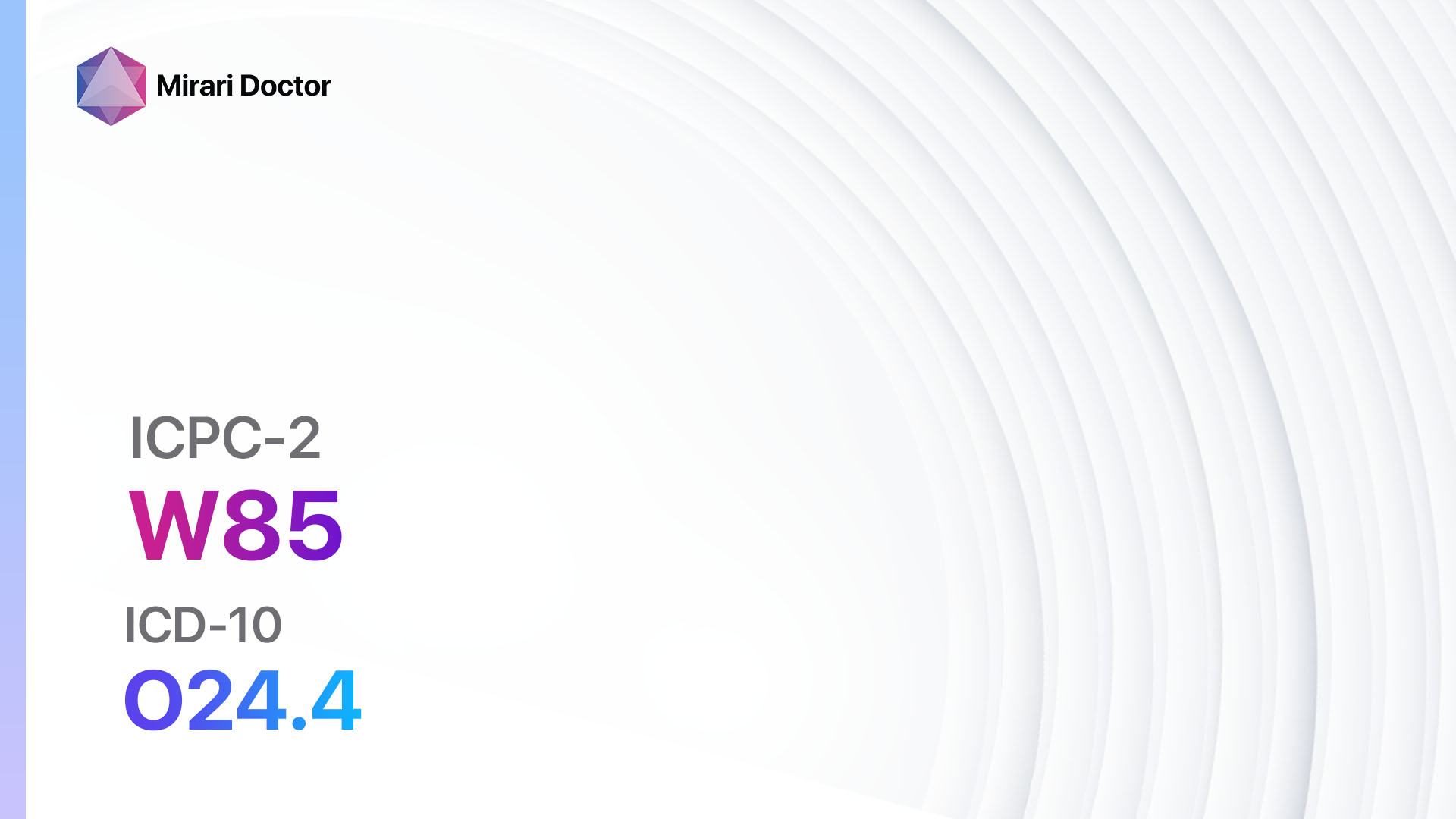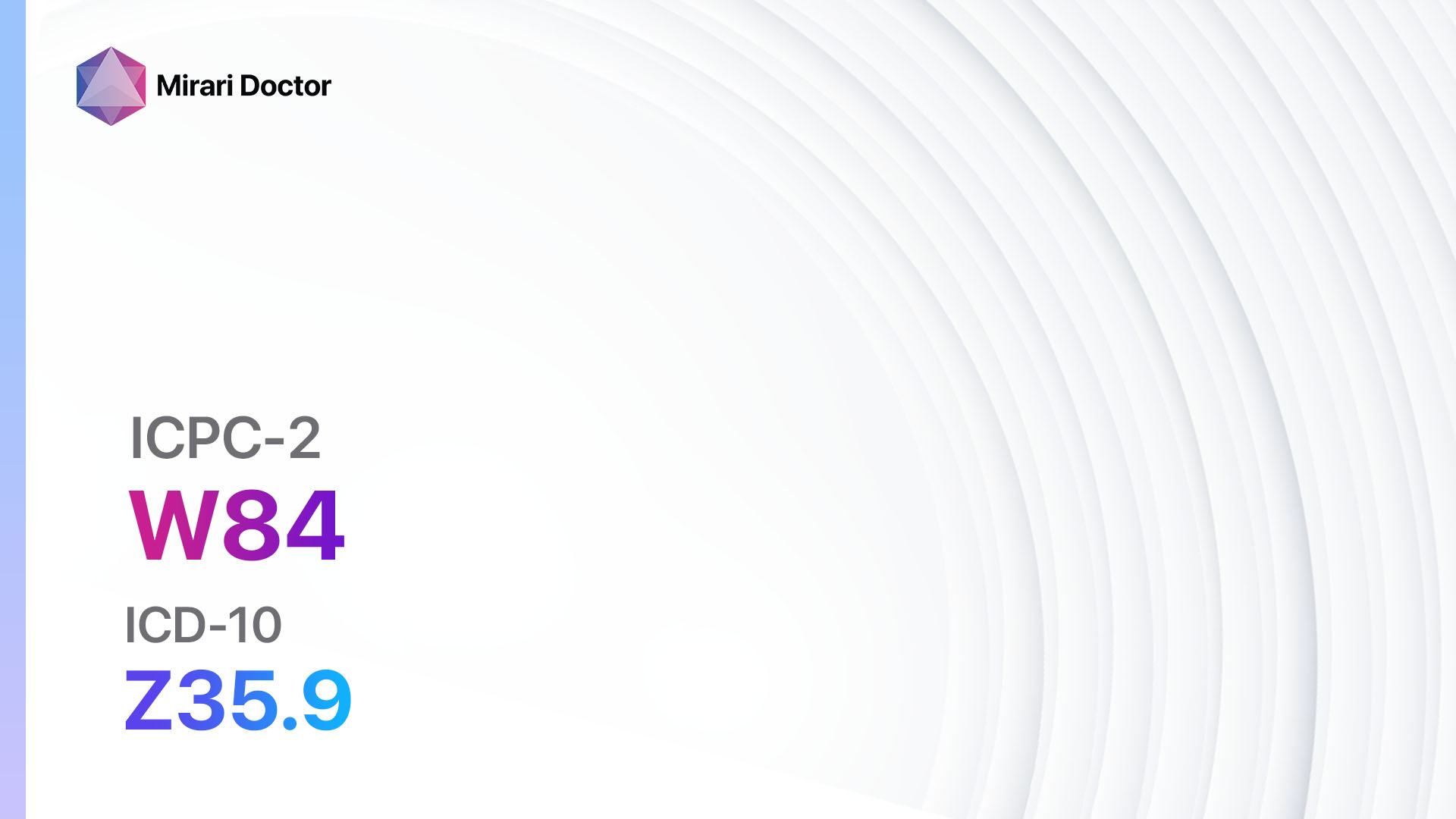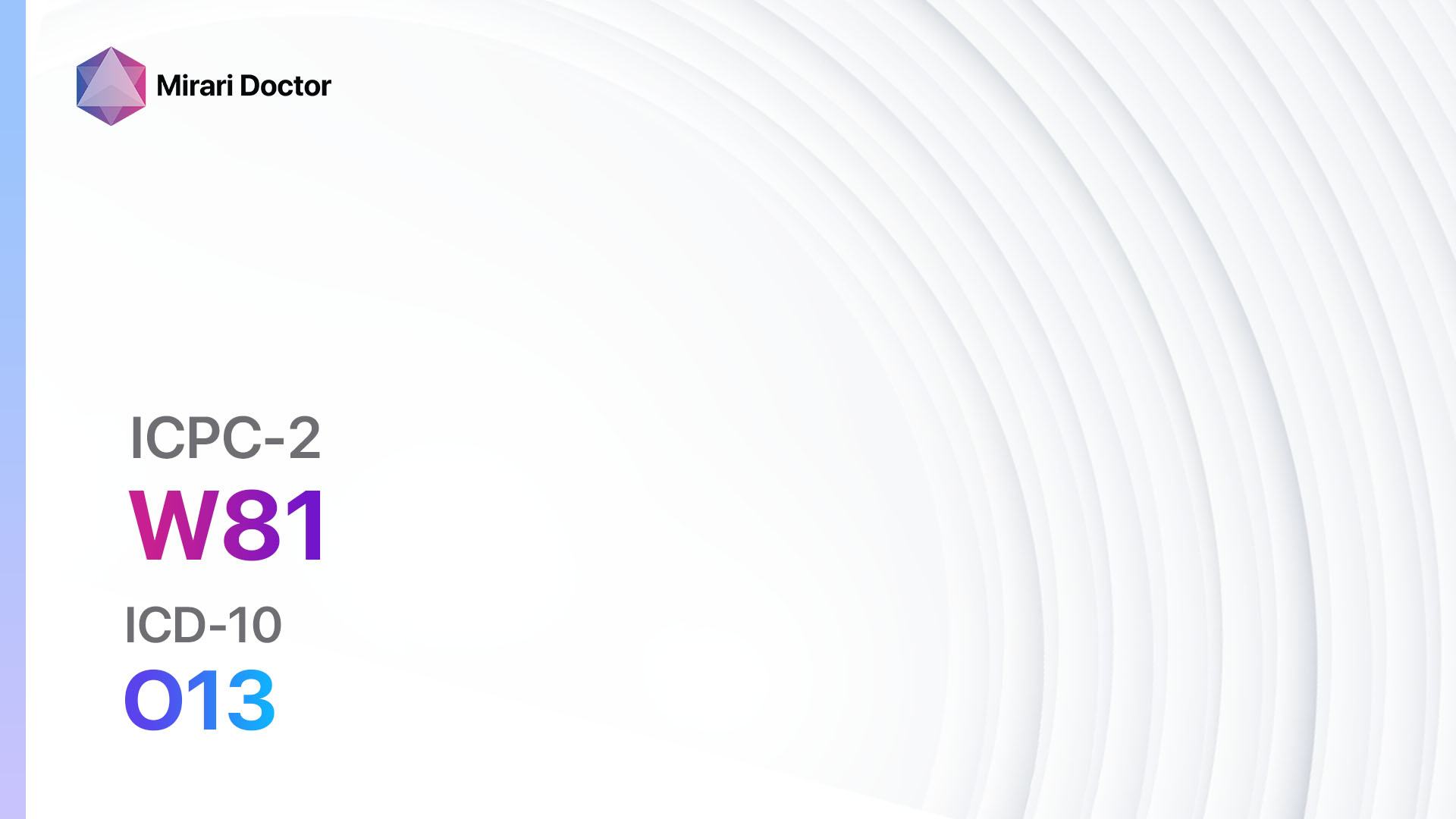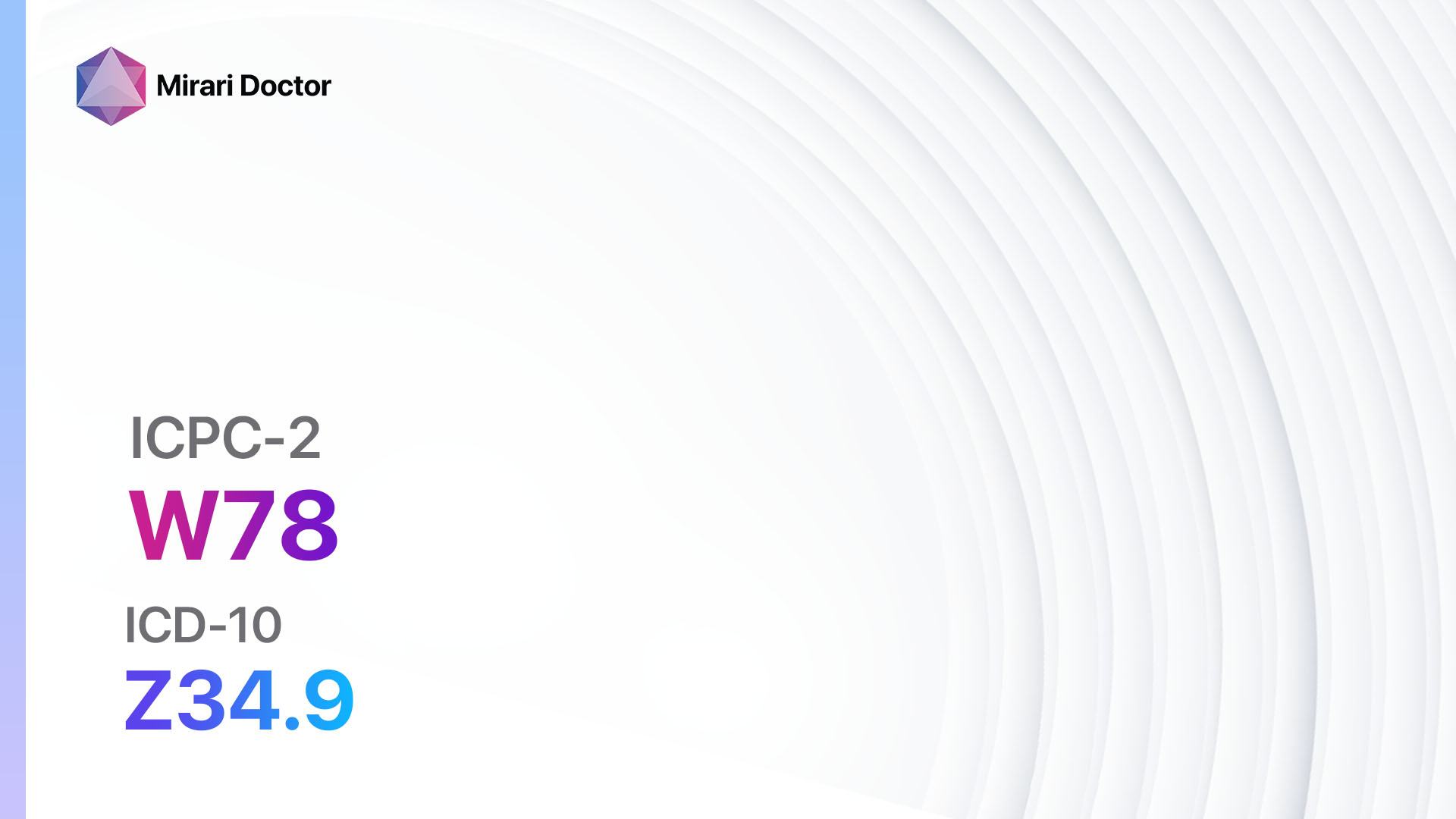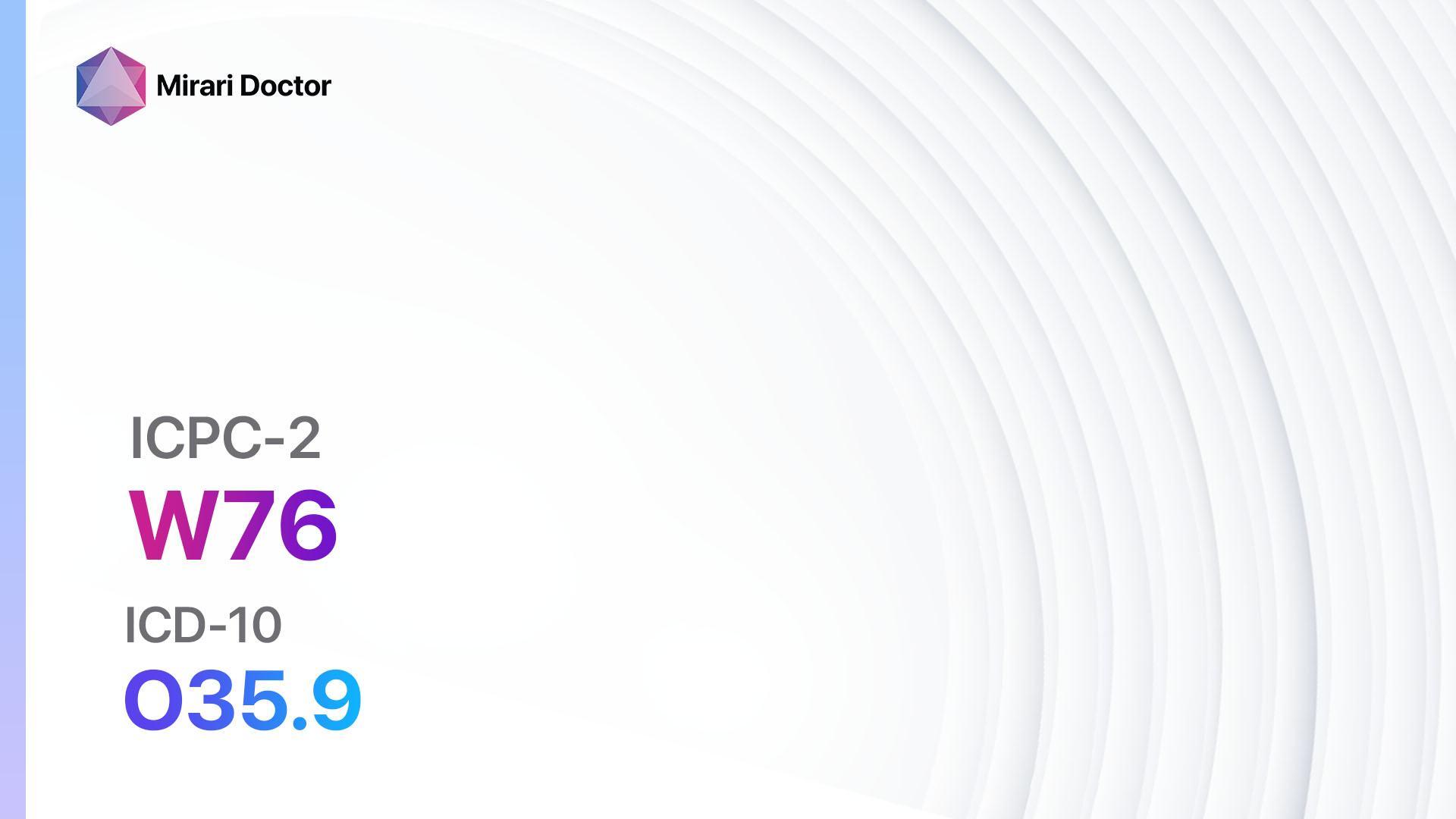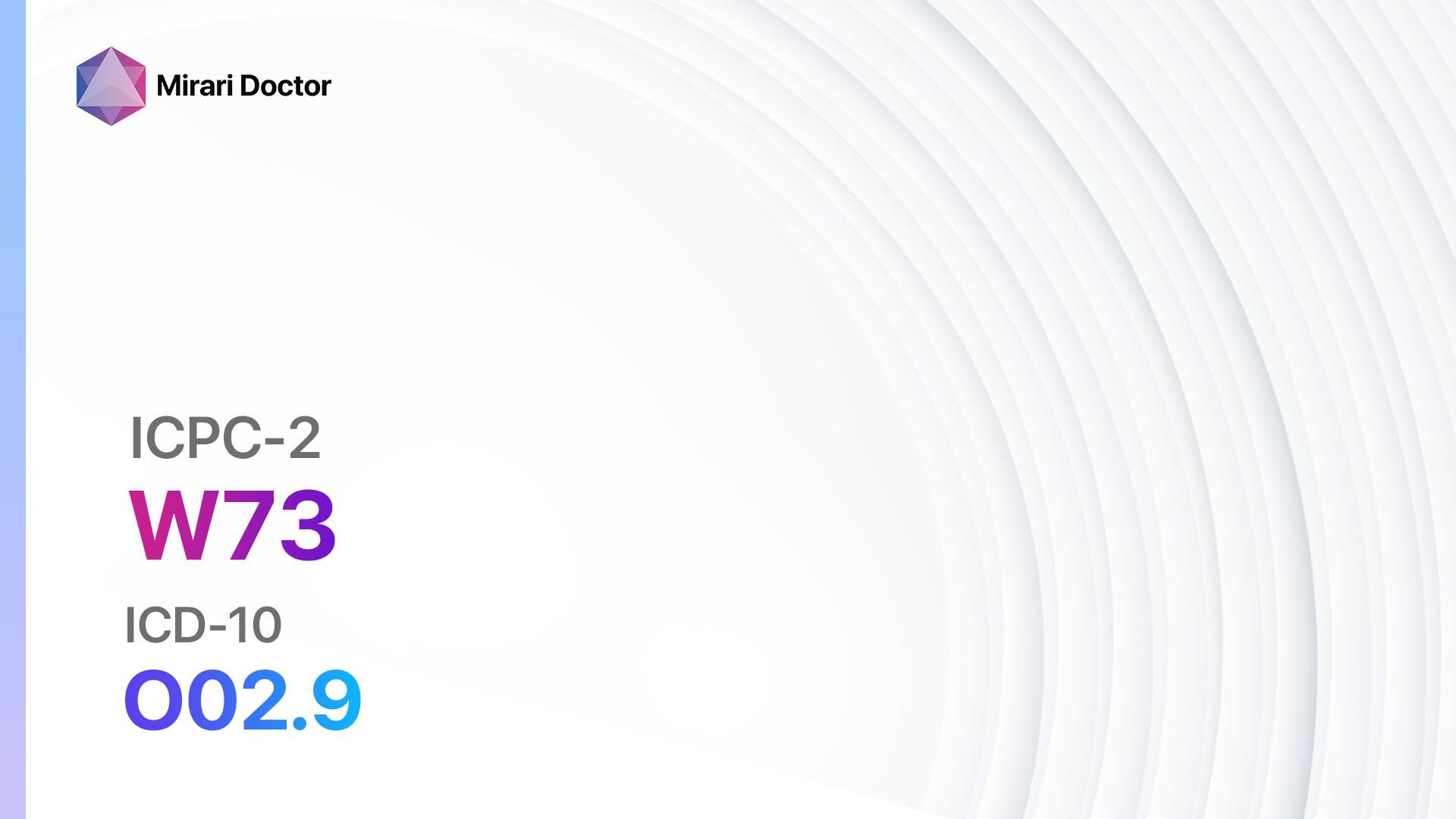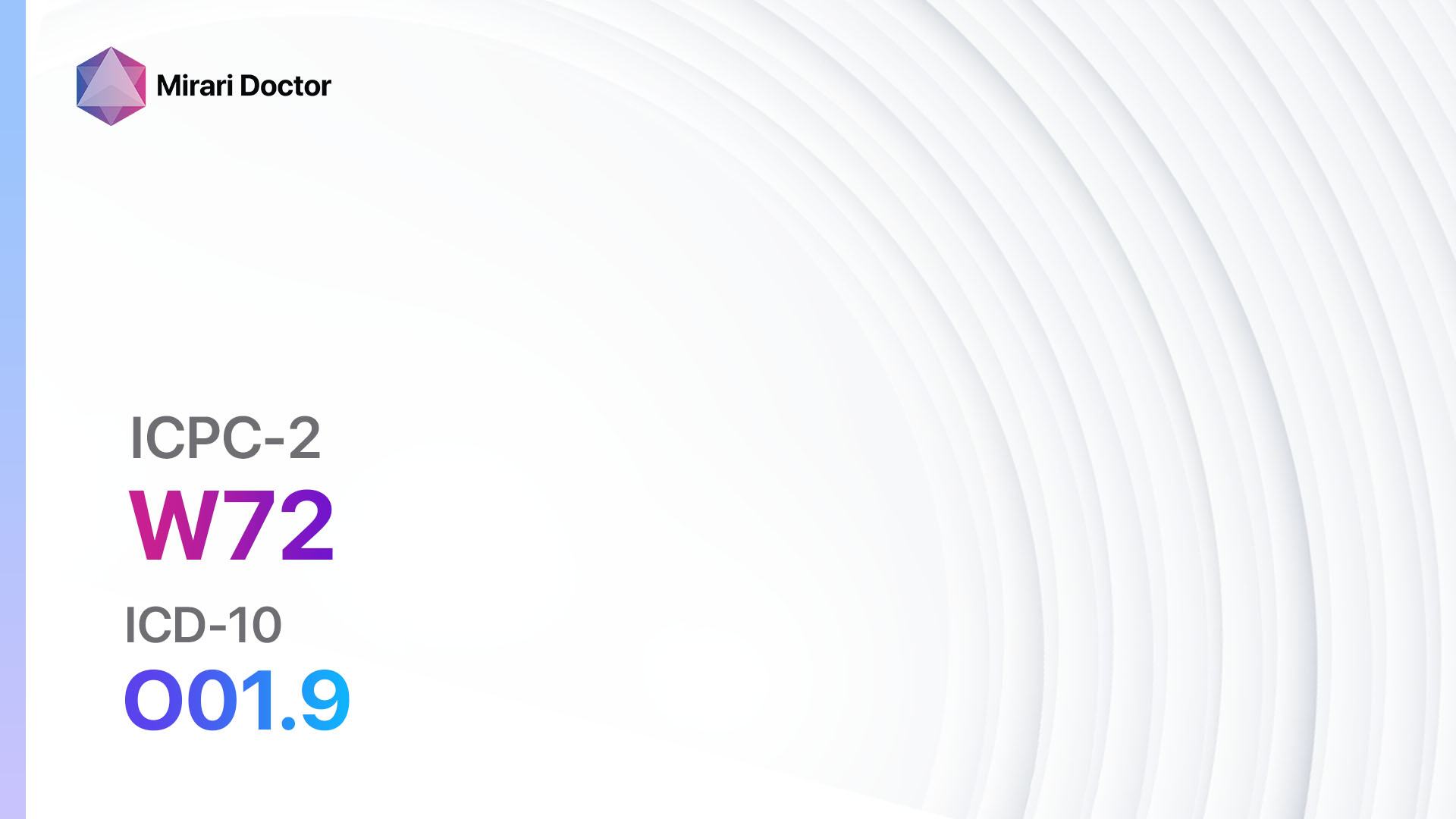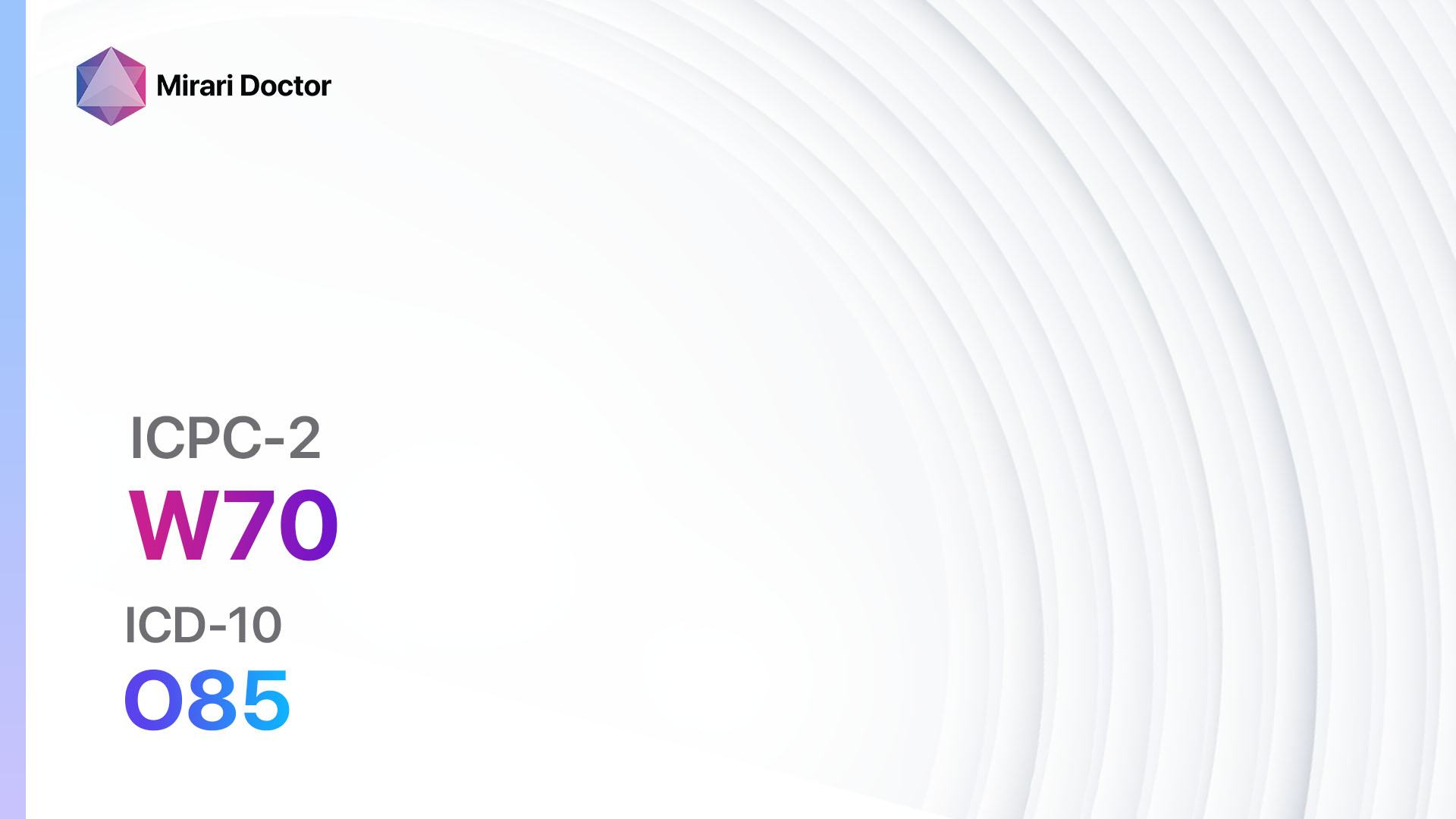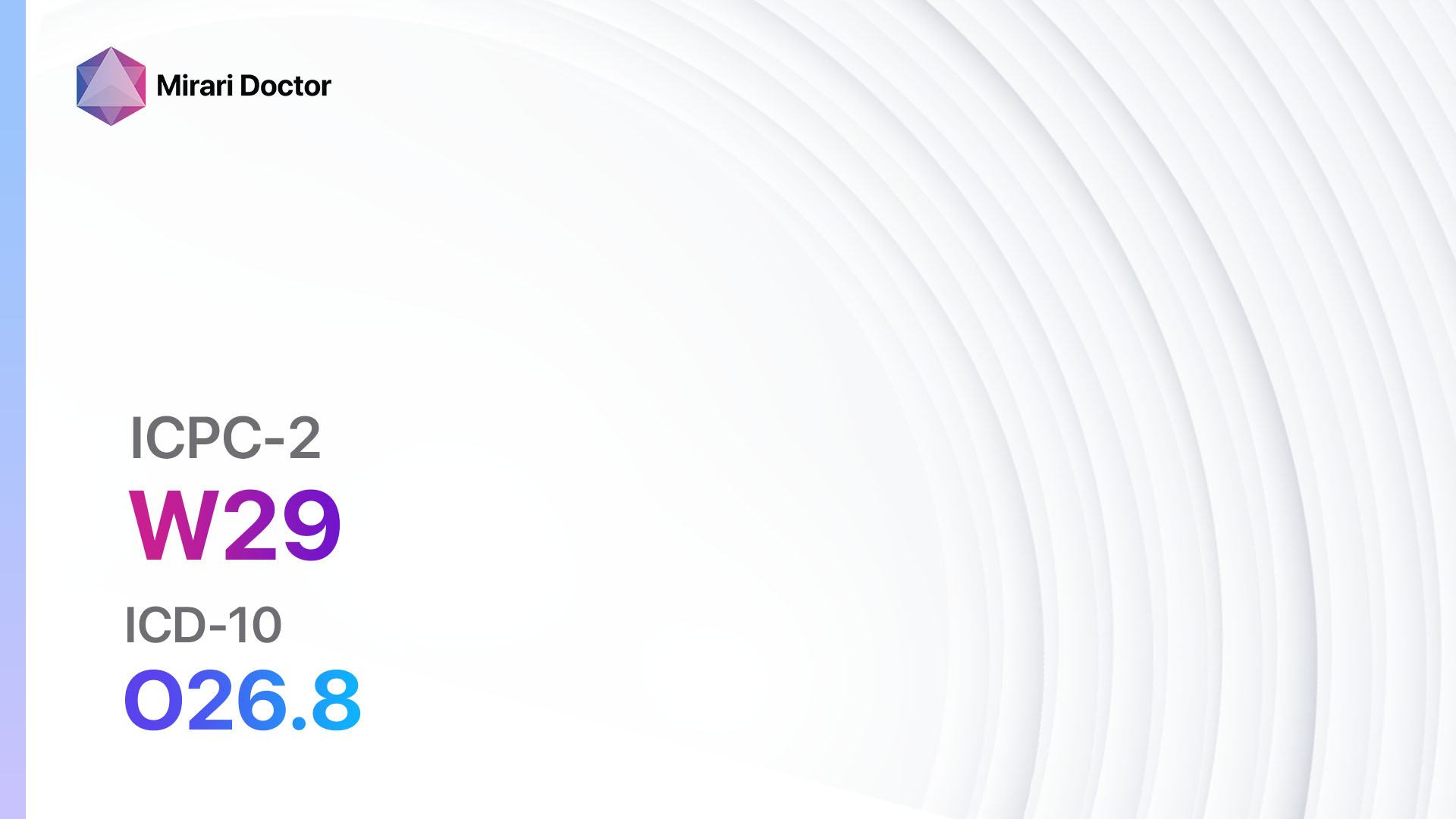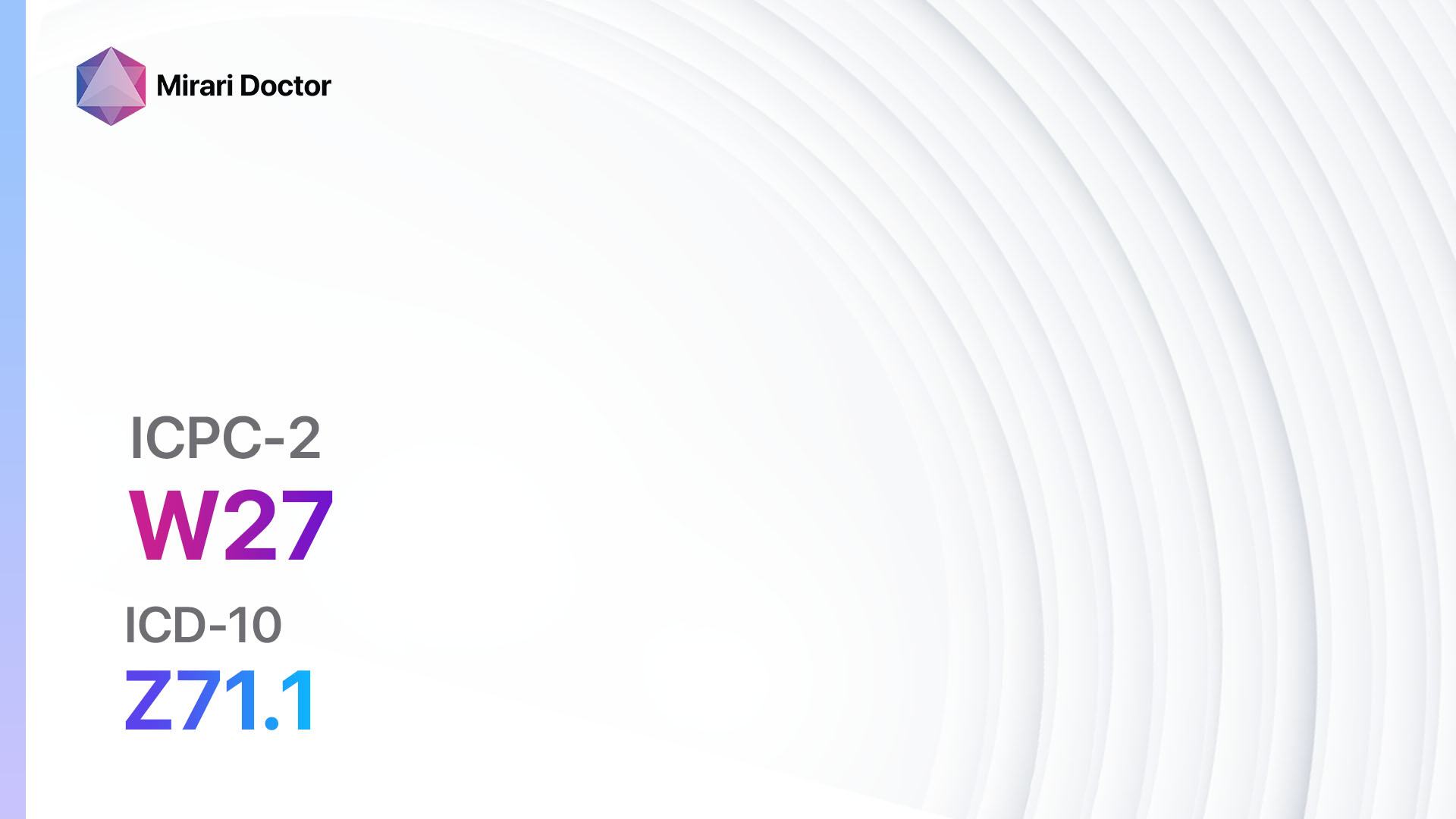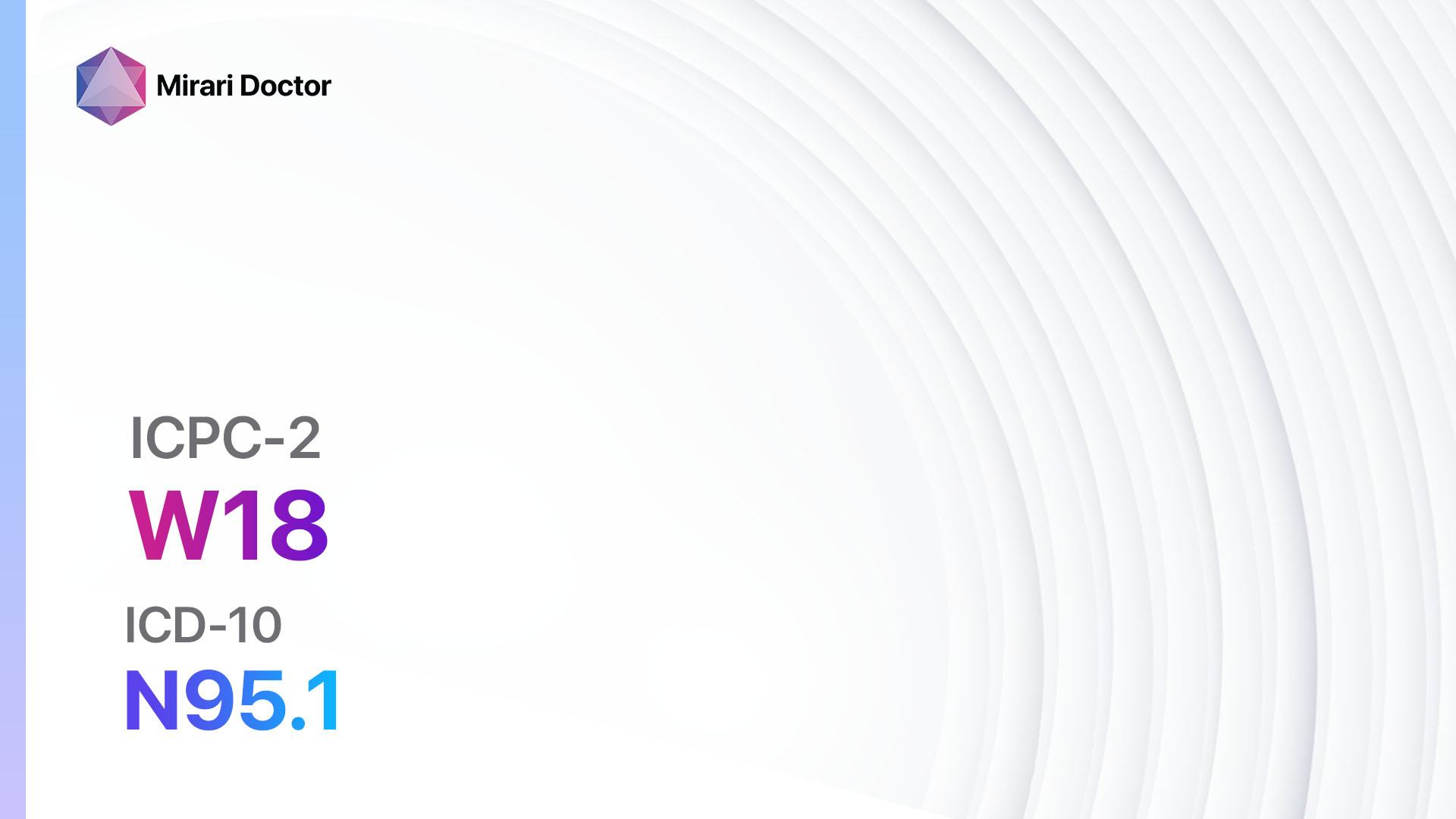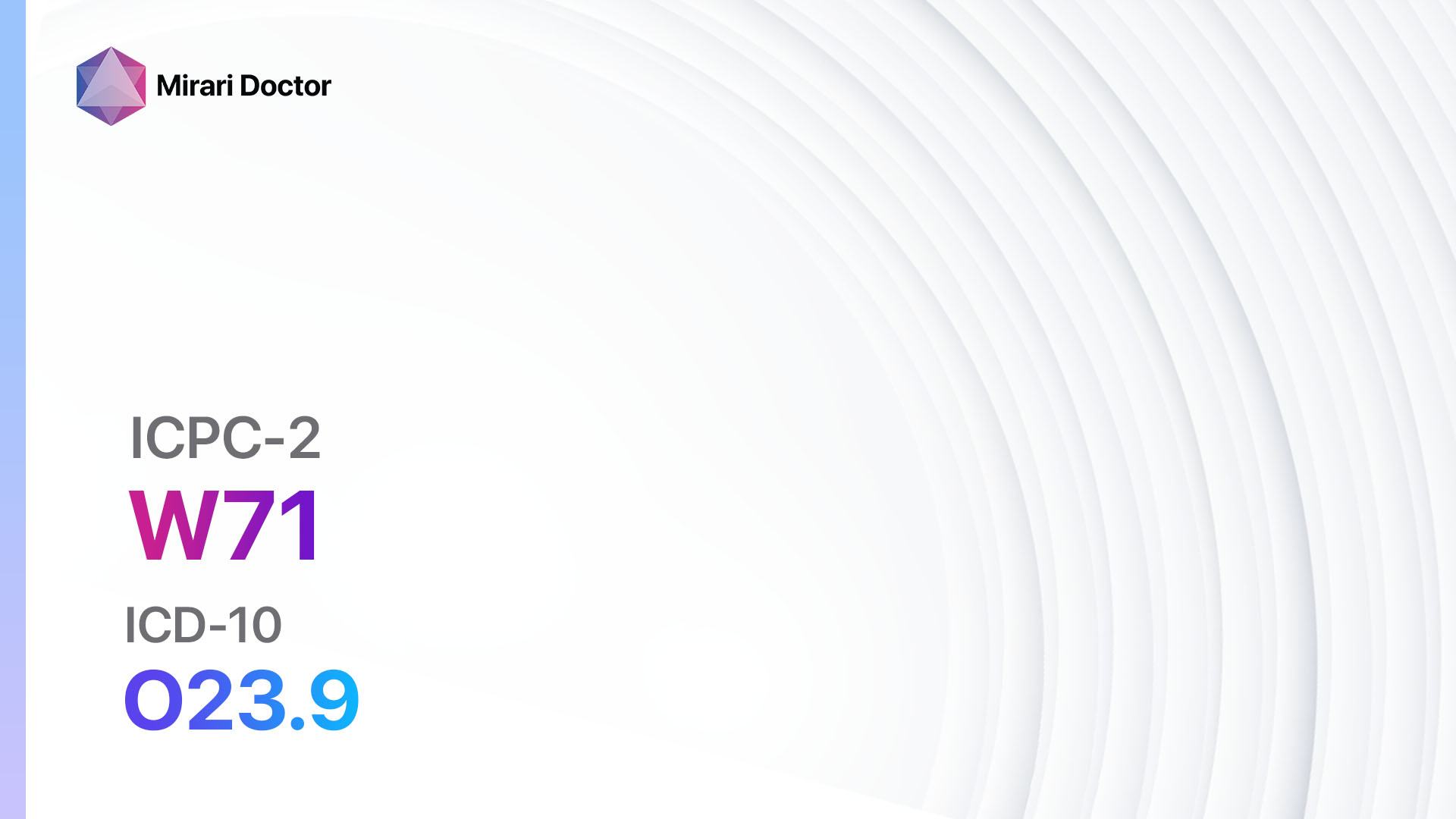
Introduction
Infection complicating pregnancy refers to the presence of an infection in a pregnant woman that can potentially affect both the mother and the developing fetus. It is a significant condition as it can lead to various complications and adverse outcomes for both the mother and the baby.[1] The aim of this guide is to provide healthcare professionals with a comprehensive approach to diagnosing and managing infection complicating pregnancy.
Codes
- ICPC-2 Code: W71 Infection complicating pregnancy
- ICD-10 Code: O23.9 Unspecified genitourinary tract infection in pregnancy
Symptoms
- Fever: Elevated body temperature, typically above 100.4°F (38°C).[2]
- Vaginal discharge: Abnormal discharge that may be foul-smelling or have an unusual color.[3]
- Abdominal pain: Discomfort or pain in the abdominal region.[4] Urinary symptoms: Increased frequency or urgency of urination, pain or burning during urination.[5]
- Fatigue: Feeling tired or exhausted.[6]
- Nausea and vomiting: Feeling sick to the stomach and vomiting.[7]
- Skin rash: Development of a rash on the skin.[8]
- Flu-like symptoms: Body aches, headache, sore throat, and cough.[9]
Causes
- Bacterial infections: Infections caused by bacteria, such as urinary tract infections, group B streptococcus infection, or bacterial vaginosis.[10].
- Viral infections: Infections caused by viruses, such as influenza, herpes simplex virus, or cytomegalovirus.
- Fungal infections: Infections caused by fungi, such as candidiasis or vaginal yeast infections.
- Parasitic infections: Infections caused by parasites, such as toxoplasmosis or malaria.
Diagnostic Steps
Medical History
- Obtain a detailed medical history, including any previous infections, chronic medical conditions, or risk factors for infection complicating pregnancy.
- Ask about symptoms, including fever, vaginal discharge, abdominal pain, urinary symptoms, fatigue, nausea and vomiting, skin rash, and flu-like symptoms.
- Inquire about recent travel to areas with a high prevalence of infectious diseases.
- Assess the patient’s immunization status, including vaccinations for influenza and other preventable infections.
Physical Examination
- Perform a thorough physical examination, including a pelvic examination to assess for any signs of infection, such as abnormal discharge or inflammation.
- Check vital signs, including body temperature, heart rate, and blood pressure.
- Examine the skin for any rashes or lesions.
- Palpate the abdomen to assess for tenderness or pain.
- Evaluate the lymph nodes for any enlargement or tenderness.
Laboratory Tests
- Complete blood count (CBC): To assess for any signs of infection, such as an elevated white blood cell count.
- Urinalysis: To detect the presence of bacteria or other abnormalities in the urine.
- Urine culture: To identify the specific bacteria causing a urinary tract infection.
- Vaginal swab: To test for the presence of bacterial or fungal infections.
- Blood cultures: To identify the causative organism in cases of suspected systemic infection.
- Serological tests: To detect the presence of specific antibodies or antigens for viral or parasitic infections.
- Polymerase chain reaction (PCR) testing: To detect the genetic material of specific pathogens, such as viruses or bacteria.
Diagnostic Imaging
- Ultrasound: To assess the health and development of the fetus, as well as to evaluate the pelvic organs for any abnormalities or signs of infection.
- Magnetic resonance imaging (MRI): To obtain detailed images of the pelvic region or other areas of concern, if necessary.
Other Tests
- Amniocentesis: In cases of suspected intrauterine infection, amniotic fluid can be tested for the presence of bacteria or viruses.
- Fetal monitoring: Continuous monitoring of the fetal heart rate and uterine contractions to assess the well-being of the baby.
Follow-up and Patient Education
- Schedule regular follow-up appointments to monitor the progress of the infection and the health of the mother and baby.
- Provide education to the patient regarding the importance of completing the prescribed treatment regimen and any necessary lifestyle modifications.
- Discuss the potential risks and complications associated with infection complicating pregnancy, as well as the importance of early detection and prompt treatment.
Possible Interventions
Traditional Interventions
Medications:
Top 5 drugs for Infection complicating pregnancy:
- Antibiotics (e.g., Amoxicillin, Ceftriaxone, Azithromycin):
- Cost: Varies depending on the specific antibiotic and dosage.
- Contraindications: Known allergies or hypersensitivity to the antibiotic.
- Side effects: Nausea, vomiting, diarrhea, allergic reactions.
- Severe side effects: Severe allergic reactions, antibiotic-associated diarrhea.
- Drug interactions: Certain antibiotics may interact with other medications, such as oral contraceptives.
- Warning: Complete the full course of antibiotics as prescribed to ensure eradication of the infection.
- Antivirals (e.g., Acyclovir, Oseltamivir):
- Cost: Varies depending on the specific antiviral and dosage.
- Contraindications: Known allergies or hypersensitivity to the antiviral.
- Side effects: Nausea, vomiting, diarrhea, headache.
- Severe side effects: Severe allergic reactions, kidney damage (in rare cases).
- Drug interactions: Certain antivirals may interact with other medications, such as blood thinners.
- Warning: Start antiviral treatment as early as possible to minimize complications.
- Antifungals (e.g., Clotrimazole, Fluconazole):
- Cost: Varies depending on the specific antifungal and dosage.
- Contraindications: Known allergies or hypersensitivity to the antifungal.
- Side effects: Nausea, vomiting, diarrhea, rash.
- Severe side effects: Severe allergic reactions, liver damage (in rare cases).
- Drug interactions: Certain antifungals may interact with other medications, such as blood thinners.
- Warning: Use antifungals as directed to ensure effective treatment.
- Antiparasitics (e.g., Metronidazole, Quinine):
- Cost: Varies depending on the specific antiparasitic and dosage.
- Contraindications: Known allergies or hypersensitivity to the antiparasitic.
- Side effects: Nausea, vomiting, diarrhea, metallic taste in the mouth.
- Severe side effects: Severe allergic reactions, neurologic symptoms (in rare cases).
- Drug interactions: Certain antiparasitics may interact with other medications, such as blood thinners.
- Warning: Complete the full course of antiparasitic treatment as prescribed to ensure eradication of the infection.
- Immunoglobulins (e.g., Rh immune globulin):
- Cost: Varies depending on the specific immunoglobulin and dosage.
- Contraindications: Known allergies or hypersensitivity to the immunoglobulin.
- Side effects: Localized pain or swelling at the injection site.
- Severe side effects: Severe allergic reactions (rare).
- Drug interactions: None reported.
- Warning: Administer immunoglobulins as directed to prevent complications in certain situations, such as Rh incompatibility.
Alternative Drugs:
- Herbal remedies: Some herbal remedies, such as echinacea or garlic, may have potential antimicrobial properties. Cost: Varies depending on the specific herb and formulation.
- Probiotics: Probiotics, such as Lactobacillus acidophilus, may help restore the natural balance of bacteria in the body. Cost: Varies depending on the specific probiotic and formulation.
Surgical Procedures:
- In certain cases, surgical intervention may be necessary to treat complications or remove a source of infection. The specific procedure will depend on the nature and location of the infection. Cost: Varies depending on the specific procedure and healthcare facility.
Alternative Interventions
- Acupuncture: May help alleviate symptoms and promote overall well-being. Cost: $60-$120 per session.
- Herbal supplements: Some herbal supplements, such as echinacea or garlic, may have potential antimicrobial properties. Cost: Varies depending on the specific supplement.
- Probiotics: Probiotics, such as Lactobacillus acidophilus, may help restore the natural balance of bacteria in the body. Cost: Varies depending on the specific probiotic and formulation.
Lifestyle Interventions
- Hygiene practices: Emphasize the importance of good hygiene, such as regular handwashing, to prevent the spread of infection.
- Dietary modifications: Encourage a healthy and balanced diet to support the immune system and overall well-being.
- Adequate rest: Stress the importance of getting enough rest and sleep to promote healing and recovery.
- Avoidance of known triggers: Advise the patient to avoid any known triggers or allergens that may worsen symptoms or increase the risk of infection.
It is important to note that the cost ranges provided are approximate and may vary depending on the location and availability of the interventions.
Mirari Cold Plasma Alternative Intervention
Understanding Mirari Cold Plasma
- Safe and Non-Invasive Treatment: Mirari Cold Plasma is a safe and non-invasive treatment option for various skin conditions. It does not require incisions, minimizing the risk of scarring, bleeding, or tissue damage.
- Efficient Extraction of Foreign Bodies: Mirari Cold Plasma facilitates the removal of foreign bodies from the skin by degrading and dissociating organic matter, allowing easier access and extraction.
- Pain Reduction and Comfort: Mirari Cold Plasma has a local analgesic effect, providing pain relief during the treatment, making it more comfortable for the patient.
- Reduced Risk of Infection: Mirari Cold Plasma has antimicrobial properties, effectively killing bacteria and reducing the risk of infection.
- Accelerated Healing and Minimal Scarring: Mirari Cold Plasma stimulates wound healing and tissue regeneration, reducing healing time and minimizing the formation of scars.
Mirari Cold Plasma Prescription
Video instructions for using Mirari Cold Plasma Device – W71 Infection complicating pregnancy (ICD-10:O23.9)
| Mild | Moderate | Severe |
| Mode setting: 1 (Infection) Location: 2 (Prostate & Uterus) Morning: 15 minutes, Evening: 15 minutes |
Mode setting: 1 (Infection) Location: 2 (Prostate & Uterus) Morning: 30 minutes, Lunch: 30 minutes, Evening: 30 minutes |
Mode setting: 1 (Infection) Location: 2 (Prostate & Uterus) Morning: 30 minutes, Lunch: 30 minutes, Evening: 30 minutes |
| Mode setting: 2 (Wound Healing) Location: 2 (Prostate & Uterus) Morning: 15 minutes, Evening: 15 minutes |
Mode setting: 2 (Wound Healing) Location: 2 (Prostate & Uterus) Morning: 30 minutes, Lunch: 30 minutes, Evening: 30 minutes |
Mode setting: 2 (Wound Healing) Location: 2 (Prostate & Uterus) Morning: 30 minutes, Lunch: 30 minutes, Evening: 30 minutes |
| Mode setting: 7 (Immunotherapy) Location: 6 (Throat, Lymphatic & Thyroid) Morning: 15 minutes, Evening: 15 minutes |
Mode setting: 7 (Immunotherapy) Location: 6 (Throat, Lymphatic & Thyroid) Morning: 30 minutes, Lunch: 30 minutes, Evening: 30 minutes |
Mode setting: 7 (Immunotherapy) Location: 6 (Throat, Lymphatic & Thyroid) Morning: 30 minutes, Lunch: 30 minutes, Evening: 30 minutes |
| Total Morning: 45 minutes approx. $7.50 USD, Evening: 45 minutes approx. $7.50 USD |
Total Morning: 90 minutes approx. $15 USD, Lunch: 90 minutes approx. $15 USD, Evening: 90 minutes approx. $15 USD |
Total Morning: 90 minutes approx. $15 USD, Lunch: 90 minutes approx. $15 USD, Evening: 90 minutes approx. $15 USD |
| Usual treatment for 7-60 days approx. $105 USD – $900 USD | Usual treatment for 6-8 weeks approx. $1,890 USD – $2,520 USD |
Usual treatment for 3-6 months approx. $4,050 USD – $8,100 USD
|
 |
|
Use the Mirari Cold Plasma device to treat Infection complicating pregnancy effectively.
WARNING: MIRARI COLD PLASMA IS DESIGNED FOR THE HUMAN BODY WITHOUT ANY ARTIFICIAL OR THIRD PARTY PRODUCTS. USE OF OTHER PRODUCTS IN COMBINATION WITH MIRARI COLD PLASMA MAY CAUSE UNPREDICTABLE EFFECTS, HARM OR INJURY. PLEASE CONSULT A MEDICAL PROFESSIONAL BEFORE COMBINING ANY OTHER PRODUCTS WITH USE OF MIRARI.
Step 1: Cleanse the Skin
- Start by cleaning the affected area of the skin with a gentle cleanser or mild soap and water. Gently pat the area dry with a clean towel.
Step 2: Prepare the Mirari Cold Plasma device
- Ensure that the Mirari Cold Plasma device is fully charged or has fresh batteries as per the manufacturer’s instructions. Make sure the device is clean and in good working condition.
- Switch on the Mirari device using the power button or by following the specific instructions provided with the device.
- Some Mirari devices may have adjustable settings for intensity or treatment duration. Follow the manufacturer’s instructions to select the appropriate settings based on your needs and the recommended guidelines.
Step 3: Apply the Device
- Place the Mirari device in direct contact with the affected area of the skin. Gently glide or hold the device over the skin surface, ensuring even coverage of the area experiencing.
- Slowly move the Mirari device in a circular motion or follow a specific pattern as indicated in the user manual. This helps ensure thorough treatment coverage.
Step 4: Monitor and Assess:
- Keep track of your progress and evaluate the effectiveness of the Mirari device in managing your Infection complicating pregnancy. If you have any concerns or notice any adverse reactions, consult with your health care professional.
Note
This guide is for informational purposes only and should not replace the advice of a medical professional. Always consult with your healthcare provider or a qualified medical professional for personal advice, diagnosis, or treatment. Do not solely rely on the information presented here for decisions about your health. Use of this information is at your own risk. The authors of this guide, nor any associated entities or platforms, are not responsible for any potential adverse effects or outcomes based on the content.
Mirari Cold Plasma System Disclaimer
- Purpose: The Mirari Cold Plasma System is a Class 2 medical device designed for use by trained healthcare professionals. It is registered for use in Thailand and Vietnam. It is not intended for use outside of these locations.
- Informational Use: The content and information provided with the device are for educational and informational purposes only. They are not a substitute for professional medical advice or care.
- Variable Outcomes: While the device is approved for specific uses, individual outcomes can differ. We do not assert or guarantee specific medical outcomes.
- Consultation: Prior to utilizing the device or making decisions based on its content, it is essential to consult with a Certified Mirari Tele-Therapist and your medical healthcare provider regarding specific protocols.
- Liability: By using this device, users are acknowledging and accepting all potential risks. Neither the manufacturer nor the distributor will be held accountable for any adverse reactions, injuries, or damages stemming from its use.
- Geographical Availability: This device has received approval for designated purposes by the Thai and Vietnam FDA. As of now, outside of Thailand and Vietnam, the Mirari Cold Plasma System is not available for purchase or use.
References
- Kourtis, A. P., Read, J. S., & Jamieson, D. J. (2014). Pregnancy and infection. The New England journal of medicine, 370(23), 2211–2218. https://doi.org/10.1056/NEJMra1213566
- Sappenfield, E., Jamieson, D. J., & Kourtis, A. P. (2013). Pregnancy and susceptibility to infectious diseases. Infectious diseases in obstetrics and gynecology, 2013, 752852. https://doi.org/10.1155/2013/752852
- Sherrard, J., Wilson, J., Donders, G., Mendling, W., & Jensen, J. S. (2018). 2018 European (IUSTI/WHO) International Union against sexually transmitted infections (IUSTI) World Health Organisation (WHO) guideline on the management of vaginal discharge. International journal of STD & AIDS, 29(13), 1258–1272. https://doi.org/10.1177/0956462418785451
- Zaigham, M., & Andersson, O. (2020). Maternal and perinatal outcomes with COVID-19: A systematic review of 108 pregnancies. Acta obstetricia et gynecologica Scandinavica, 99(7), 823–829. https://doi.org/10.1111/aogs.13867
- Kalinderi, K., Delkos, D., Kalinderis, M., Athanasiadis, A., & Kalogiannidis, I. (2018). Urinary tract infection during pregnancy: current concepts on a common multifaceted problem. Journal of obstetrics and gynaecology : the journal of the Institute of Obstetrics and Gynaecology, 38(4), 448–453. https://doi.org/10.1080/01443615.2017.1370579
- Cheng, P. J., Chueh, H. Y., Liu, C. M., Hsu, J. J., Soong, Y. K., & Lai, Y. M. (2003). Risk factors for recurrence of group B streptococcus colonization in a subsequent pregnancy. Obstetrics and gynecology, 101(6), 1236–1239. https://doi.org/10.1016/s0029-7844(03)00353-0
- Vazquez, J. C., & Abalos, E. (2011). Treatments for symptomatic urinary tract infections during pregnancy. The Cochrane database of systematic reviews, 2011(1), CD002256. https://doi.org/10.1002/14651858.CD002256.pub2
- Jamieson, D. J., Theiler, R. N., & Rasmussen, S. A. (2006). Emerging infections and pregnancy. Emerging infectious diseases, 12(11), 1638–1643. https://doi.org/10.3201/eid1211.060152
- Silasi, M., Cardenas, I., Kwon, J. Y., Racicot, K., Aldo, P., & Mor, G. (2015). Viral infections during pregnancy. American journal of reproductive immunology (New York, N.Y. : 1989), 73(3), 199–213. https://doi.org/10.1111/aji.12355
- Cunnington, M., Kortsalioudaki, C., & Heath, P. (2013). Genitourinary pathogens and preterm birth. Current opinion in infectious diseases, 26(3), 219–230. https://doi.org/10.1097/QCO.0b013e328360dc31
Related articles
Made in USA


